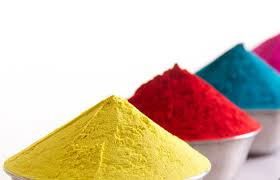Key Aspects of Pigments for Rubber
2024-07-30
Pigments for rubber are colorants used to impart color to rubber materials. They play a crucial role in various industries, from automotive to footwear, providing both aesthetic and functional benefits. Here are key aspects of pigments for rubber:
Types of Pigments:
1. Organic Pigments:
- Characteristics: Derived from carbon-based molecules, they offer bright, vibrant colors.
- Applications: Used for coloring synthetic rubbers like EPDM, SBR, and NBR.
- Examples: Phthalocyanine blue, azo pigments, and quinacridone pigments.
2. Inorganic Pigments:
- Characteristics: Typically derived from mineral compounds, they are known for their durability and stability.
- Applications: Used in applications requiring high heat and light stability.
- Examples: Titanium dioxide (white), iron oxide (red, yellow, black), and chromium oxide (green).
3. Carbon Black:
- Characteristics: A form of paracrystalline carbon, it is one of the most commonly used pigments in the rubber industry.
- Applications: Provides black color and enhances properties like UV resistance, tensile strength, and abrasion resistance.
- Types: Different grades such as N220, N330, and N550, each providing different levels of reinforcement and color intensity.
Considerations for Choosing Pigments:
1. Compatibility:
- Ensure the pigment is compatible with the type of rubber being used (natural rubber, synthetic rubber, etc.).
2. Heat Stability:
- Choose pigments that can withstand the processing temperatures of the rubber without degrading or changing color.
3. Lightfastness:
- For applications exposed to sunlight, select pigments with high lightfastness to prevent fading.
4. Dispersion:
- Good dispersion is crucial for uniform color and performance properties. Poor dispersion can lead to weak spots and inconsistent coloring.
5. Chemical Resistance:
- In applications where the rubber is exposed to chemicals, choose pigments that are resistant to chemical reactions.
Applications:
1. Automotive:
- Pigments are used in tires, seals, and various rubber parts for both aesthetic and functional purposes.
2. Footwear:
- Rubber soles, sandals, and other footwear components are colored using pigments to achieve desired looks.
3. Industrial Products:
- Conveyor belts, hoses, and gaskets are often colored to meet specific industry standards or for easy identification.
4. Consumer Goods:
- Products like rubber bands, toys, and household items use pigments for a wide range of colors.
Processing Techniques:
1. Masterbatch:
- Pigments are often incorporated into a masterbatch, a concentrated mixture of pigments and rubber, which is then blended with the base rubber during processing.
2. Direct Addition:
- Pigments can be added directly to the rubber compound during mixing. This requires precise control to ensure even distribution.
By selecting the appropriate pigments, manufacturers can enhance the appearance, durability, and performance of rubber products, meeting both functional requirements and aesthetic preferences.



